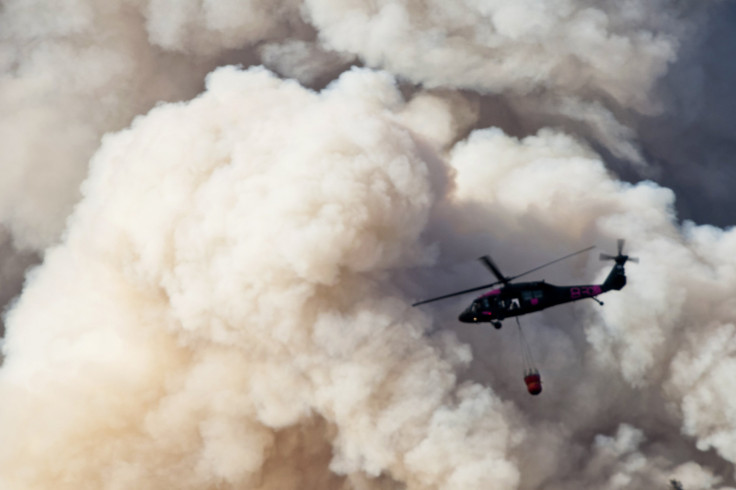Dangerous Wildfire Smoke Affects Two-Thirds Of US, Including States Untouched By Forest Fires

Historically, the health effects of industrial smog have gained much attention in America. But now as factories disappear to other countries, the problem of pollution from wildfires is coming into the fore. Smoke from wildfires threatens human health, too.
By 2011, two-thirds of Americans lived in areas of the country affected by wildfire smoke, according to a recent analysis from the Natural Resources Defense Council. The late-summer Western wildfire season spreads smoky air through wide swaths of the country, covering 50 times as many square miles as those burned by fire.
"It affects a much wider area of the United States than people realize," Kim Knowlton, a Columbia University health professor with the group, told USA Today. Far afield from the fires, smoke containing fine-particle pollution may cause asthma attacks and pneumonia in addition to worsening chronic heart and lung diseases.

The group posited that global climate change would worsen U.S. wildfires, causing wider respiratory ailments throughout much of the country. Their findings followed from an analysis of smoke data collected from federal weather satellites. Hardest hit among the states was Texas, when medium to high-density smoke hung for a week or so in areas home to 25 million people.
Although the U.S. Forest Service burns significant acreage in a controlled manner to manage federal forests, most of the smoke came from wildfires, Knowlton says.
That year, Illinois recorded no wildfires within the state but nevertheless ranked second among U.S. states in number of people affected by smoke. Nearly 12 million Illinois residents are affected by smoke blown in from elsewhere. Residents of Florida, Missouri, Georgia, Louisiana, Michigan, Alabama, Oklahoma, and Iowa also ranked among the top ten smokiest states in the country.
While 22 states recorded no wildfires, Illinois and seven others — Missouri, Iowa, Kansas, Nebraska, Indiana, Wisconsin, and Ohio — were doused with at least one week of medium to high intensity smoke-polluted air. With smoky air affecting around 212 million Americans, residents in only 18 states were spared smoke from wildfires. However, fires erupted in five of them—Alaska, California, Hawaii, Nevada, and Utah.
Knowlton says environmental problems from wildfires will only worsen as climate change raises temperatures and causes drought. “Our landscapes are becoming more of a tinderbox,” she says, citing government data. As heat waves and drought struck many parts of the U.S., 8.7 million acres burned across the nation, for an increasingly greater expanse hit by wildfires than in years past.
According to a study released last month by Harvard University researchers, the Western states will only burn hotter and longer in a future some liken to the apocalypse—at least with regard to respiratory illnesses.
Loretta J. Mickley, a researcher in atmospheric chemistry, told Harvard Magazine that temperature would be the biggest driver of wildfires across the Western U.S. “When you get a large temperature increase over time, as we are seeing, and little change in rainfall, fires will increase in size.”
Mickley and her colleagues say wildfire acreage would increase by as much as 124 percent by one calculation. In another calculation taking into account temperature, rainfall, and relative humidity, researchers predicted an even more dramatic jump in wildfire acreage, an increase of 169 percent. Global climate change, researchers say, will exacerbate wildfires in arid states and, consequently, worsen wildfire smoke throughout the country.
Source: Yue, Xu, Mickley, Loretta J., Logan, Jennifer A., Kaplan, Jed O. Ensemble Projections Of Wildfire Activity And Carbonaceous Aerosol Concentrations Over The Western United States In The Mid-21st Century. Atmospheric Environment. 2013.
Published by Medicaldaily.com



























